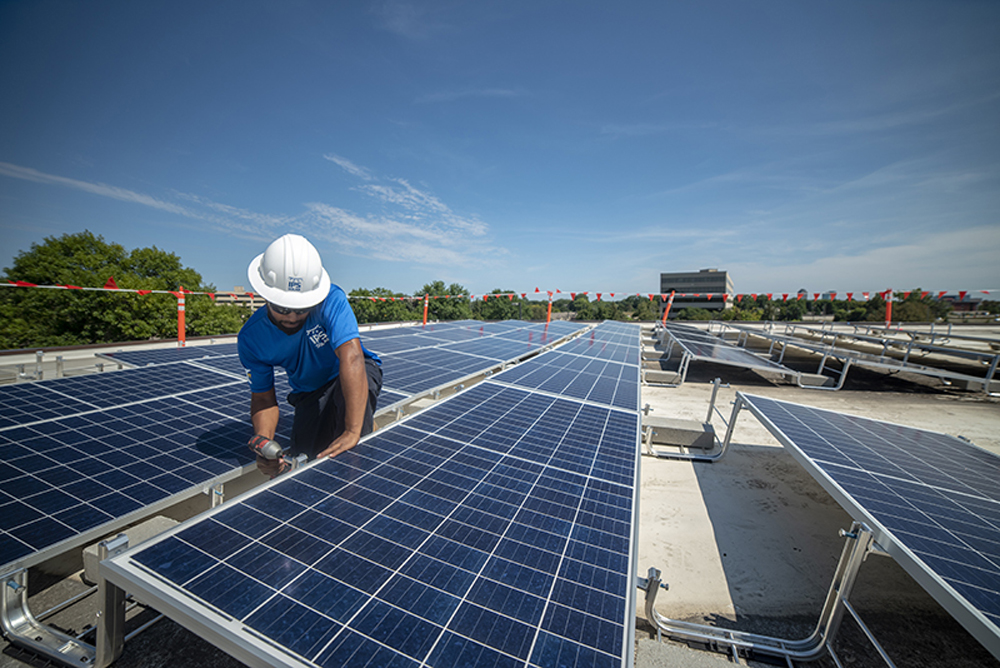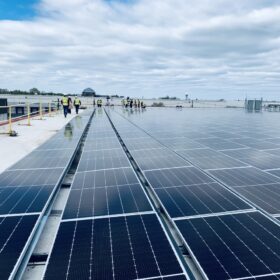The 2022 Minnesota Energy Factsheet, which tracks clean energy trends in the state through year end 2021, was released today by Clean Energy Economy Minnesota (CEEM) and the Business Council for Sustainable Energy (BCSE). Despite challenges, clean energy industries lead the energy transition in Minnesota, according to the findings.
The Factsheet is a companion to the 2022 Sustainable Energy in America Factbook, which outlines key trends influencing national and state investment and economics, energy supply and energy demand. Both resources are commissioned by the Business Council for Sustainable Energy (BCSE), with research by BloombergNEF. The Minnesota Energy Factsheet is made possible with the support of the McKnight Foundation.
“The facts support continued public policy support and investment in the clean energy sector, for its economic and environmental benefits to residents of Minnesota,” said Lisa Jacobson, President of the BCSE.
In 2021, renewable energy provided 28% of electricity generation for Minnesota, while zero-carbon sources, renewables and nuclear technologies, provided the majority at 52%. Subsequently, power sector emissions have fallen 40% over the last decade and while they rose slightly in 2021 from 2020 levels, they were still lower than their pre-pandemic levels in 2019. The increase in emissions was expected and driven by an economic rebound and a slight increase of coal-powered electricity due to the high cost of natural gas.
Minnesota’s energy productivity, or how efficiently the state uses its energy, rose again in 2021.
“The data from last year shows how the clean energy transition is happening in Minnesota in real time, and the decline of energy imports is an especially exciting metric as we work to achieve energy independence” said Gregg Mast, Executive Director of Clean Energy Economy Minnesota. “The challenges of 2021 have demonstrated why it’s more important than ever to continue expanding our clean energy sector with thoughtful policy and smart investments.”
Minnesota’s track record on renewables reflects strong support in the state. For example, in February 2021, Minnesota Power announced plans to become 100% carbon-free by 2050, building on the utility’s EnergyForward strategy and recent achievement of providing 50% renewable energy to its customers.lawmakers in Minnesota. Also in February of last year, lawmakers introduced a bill that would check some of the powers that homeowner associations (HOAs) have over residential solar systems. The bill would allow HOAs to regulate, but not ban, the installation of solar systems.
Highlights from this year’s Minnesota Energy Factsheet include:
- At 52%, zero-carbon power continued to be the majority of Minnesota’s electrical generation in 2021, compared to the national average of 39%.
- Over the last decade, renewable generation has risen 60%– from 10.6TWh to 17TWh in 2021–with renewables providing 28% of Minnesota’s generation in 2021.
- 81% of new power generating capacity were renewables in the last decade
- In 2021, wind and solar accounted for 98.5% of new generation capacity added in Minnesota.
- Minnesota is on its way to achieving energy independence with energy imports just 10% in 2021, compared to 22% a decade ago.
- Minnesota emission reduction now stand at 45% below 2005 levels vs. the 35% reduction nationwide.
- Power sector emissions in Minnesota have fallen 40% in the last decade. The rebound in economic activity in 2021 has corresponded to a 9% increase in emissions, but they remain below pre-pandemic levels.
- Minnesota’s energy productivity or how efficiently we use energy, increased to 29% from 25% in 2020.
- Annual registrations for electric vehicles have increased 300% in the last 5 years.
This content is protected by copyright and may not be reused. If you want to cooperate with us and would like to reuse some of our content, please contact: editors@pv-magazine.com.









It is unfortunate that Minnesota considers it Nuclear Technology as Non-Polluting as Solar Energy.
They are welcome to their bliss with their nuclear waste piling up up at their Prairie Island (and other) Nuclear Plants. PI is hardly 20miles from Minneapolis/St Paul outskirts. This Plant is also at a very very vulnerable site subject to flooding by the adjacent Mississippi River… specially for nuclear waste… that will “hang around” for 100,000+ yrs .. as the Fedetal Govt. has already tried find a “suitable site” for at least 50 years now… due to the NIMBY Effect… including Minneapolis and Minnesota… .